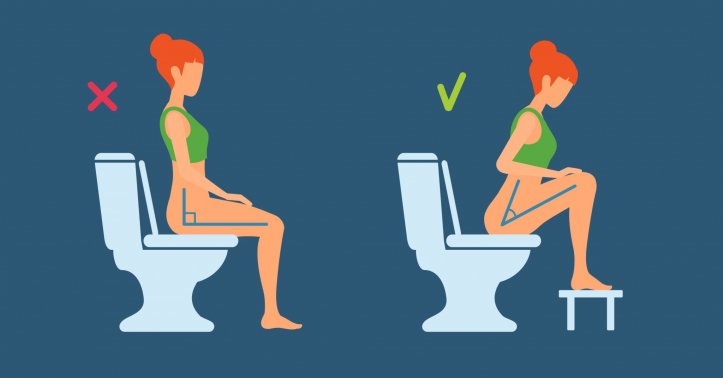
Reevaluating bathroom habits
Dr. Riitesh Sinha, a holistic health researcher, emphasizes the health impacts of common bathroom habits, specifically urinating while standing and using a commode for bowel movements. According to Dr. Sinha, these practices, though widely accepted, may have hidden consequences for health and posture. He suggests that traditional practices, such as squatting, may offer better physiological benefits.
1. Urinating While Standing: Health and Postural Considerations
In many cultures, especially in the West and in India, men commonly urinate while standing. However, Dr. Sinha explains that this posture can lead to incomplete bladder emptying, which can contribute to urinary tract infections (UTIs) and other bladder issues over time.
Dr. Sinha also highlights that urinating while standing places additional pressure on the pelvic floor muscles. The pelvic floor acts as a supportive "sling" for essential organs like the bladder, intestines, and uterus (in women). Over time, excess pressure can contribute to pelvic floor dysfunction, leading to issues such as urinary leakage. “Squatting to urinate can allow these muscles to relax more fully” Dr. Sinha states.
2. Squatting as a Natural Alternative
Dr. Sinha advocates for a more natural approach, recommending squatting or sitting to urinate. This posture aligns with the body’s anatomical design and allows the pelvic muscles to relax more completely, making it easier to empty the bladder. Studies also indicate that squatting reduces pelvic floor strain, supporting long-term urinary and postural health.
3. Using a Commode vs. Squatting for Bowel Movements
Most modern bathrooms feature a commode-style toilet, requiring users to sit upright. Dr. Sinha argues that this position is not ideal for bowel movements. “The human body is anatomically suited for squatting during defecation,” he explains. Sitting causes the rectum to form a kink due to the angle of the anal canal, making it more challenging to pass stool without straining.
Squatting, in contrast, straightens the rectum, allowing stool to pass smoothly with minimal strain. Dr. Sinha notes that “squatting is a gravity-assisted position that minimizes strain on the intestines and rectum.” For those using commodes, he suggests placing a small stool under the feet to simulate a squatting angle, which eases bowel movements.
Benefits of Adjusting Bathroom Habits
Adjusting bathroom practices may offer numerous health benefits, from improved bladder health to easier bowel movements. Dr. Sinha believes that adopting more natural postures can reduce common health issues tied to modern bathroom habits.
A Mindful Approach to Bathroom Practices
Dr. Sinha’s insights encourage reconsidering bathroom routines and embracing a mindful approach that prioritizes the body’s natural alignment and comfort. He hopes to raise awareness about the long-term impacts of these daily practices and suggests exploring small adjustments that lead to better health outcomes. “Simple changes in habits can yield major health improvements,” he concludes, emphasizing that traditional methods often align better with our body’s design.
By Dr Riitesh Sinha
References:
Rosier, P. F. W. M., et al.* (2007). "Bladder compliance and pelvic floor function: A clinical perspective." International Journal of Urology.
de Groat, W. C., & Yoshimura, N. (2001). "Mechanisms underlying the recovery of lower urinary tract function following spinal cord injury."
- Smith, M. D., Russell, A., & Hodges, P. W. (2006). "The role of the pelvic floor in core stability."
Alperin, M., et al. (2016). "The anatomy of the pelvic floor muscles in relation to their function and their role in pelvic organ prolapse and urinary incontinence." *Journal of Pelvic Medicine and Surgery.
3. Health Benefits of Squatting for Bowel Movements
- Sikirov, B. B. (2003). "Comparison of straining during defecation in three positions: Results and implications for human health."
- Rao, S. S. C., et al. (2009). "The Importance of Rectoanal Angle in Maintaining Continence and Implications for the Design of Toilets." Journal of Clinical Gastroenterology.








